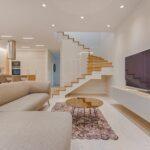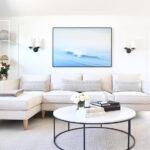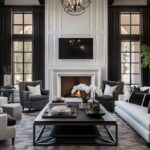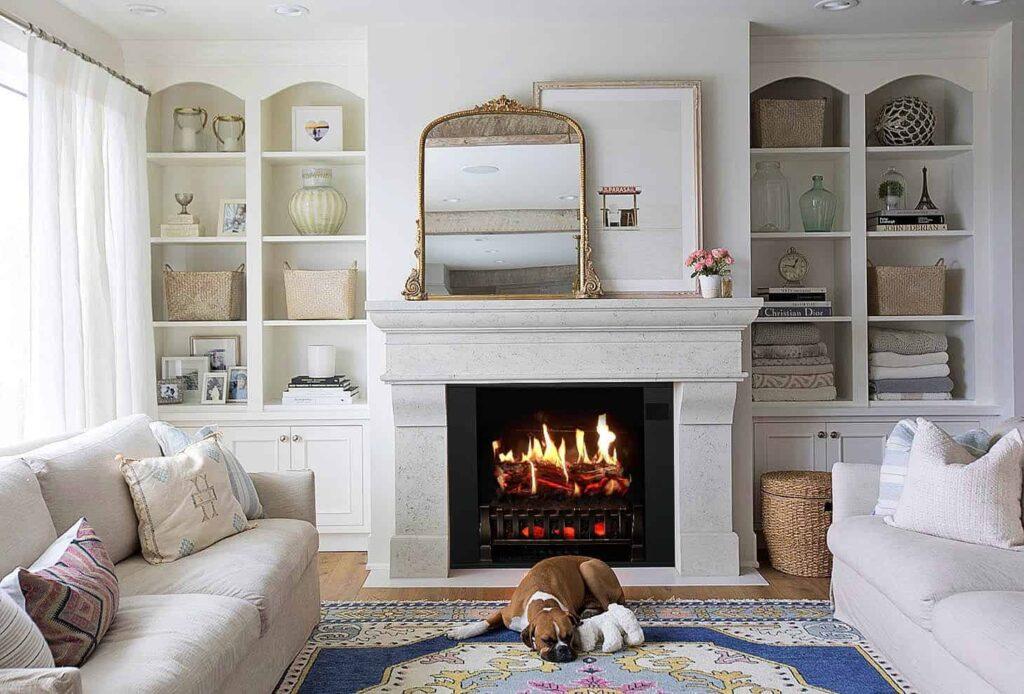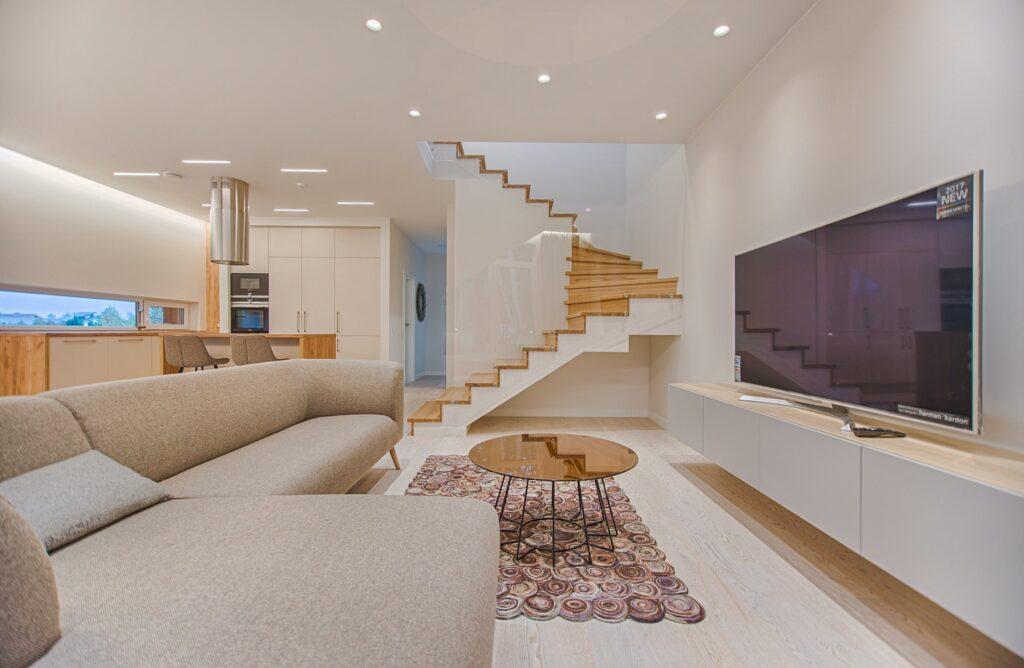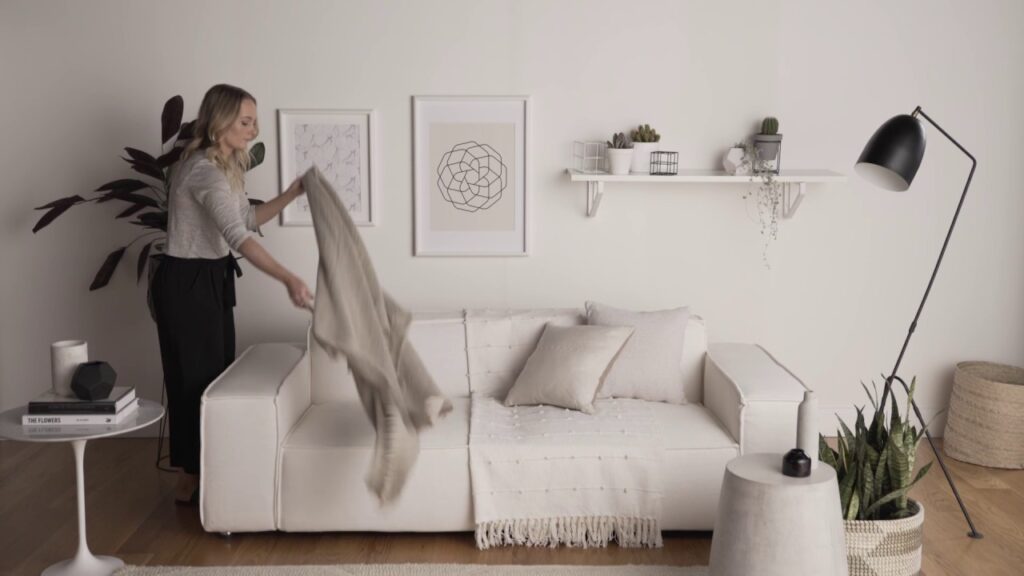Perfectly arranging living room furniture can be quite a task. Strategizing the layout for maximum comfort and a pleasing aesthetic requires planning and a little ingenuity. Here, we’re going to guide you through the key steps to flawlessly arrange living room furniture.
Let us dive into the main pointers:
- Choosing a Focal Point: Identify which area or piece will draw the most attention in your living room.
- Defining Traffic Flow: This involves mapping out paths for easy navigation around the furniture.
- Positioning Large Furniture First: Start with big pieces to define your spaces and layout.
- Determining TV and Fireplace Placement: The viewing span should be comfortable and convenient for all.
- Furniture Arrangements for Lounging: Arrange sofas, chairs, and tables keeping comfort in priority.
- Living Room Layouts for Gathering Spaces: Focus on creating intimate, conversational areas within the room.
To execute these steps effectively in arranging your living room, you’ll need patience and a keen eye for space optimization.
The Art of Living Room Arrangements
The first step to arrange living room furniture is to identify the focal point. It could be a striking fireplace, a large window overlooking the garden or even an accent wall.
Once you have defined your traffic flow, consider the size of your pieces. Large furniture items should always be placed first. This allows them to dictate the space’s flow and function.
TV and fireplace placement are important considerations too. Ensure they’re positioned so that they don’t strain viewers’ necks or become a potential hazard. Lastly, remember to make your spaces cozy and inviting. After all, living rooms are meant to be lived in and enjoyed!
Contents
- Choosing a Living Room Focal Point
- Defining Your Traffic Flow
- Positioning Large Furniture First
- Determining TV and Fireplace Placement
- Creating Straight Path Traffic Flows
- Furniture Arrangements for Lounging
- Living Room Layouts for Gathering Spaces
- 10 Rules for Arranging Living Room Furniture
- Mastering Furniture Layout
Choosing a Living Room Focal Point
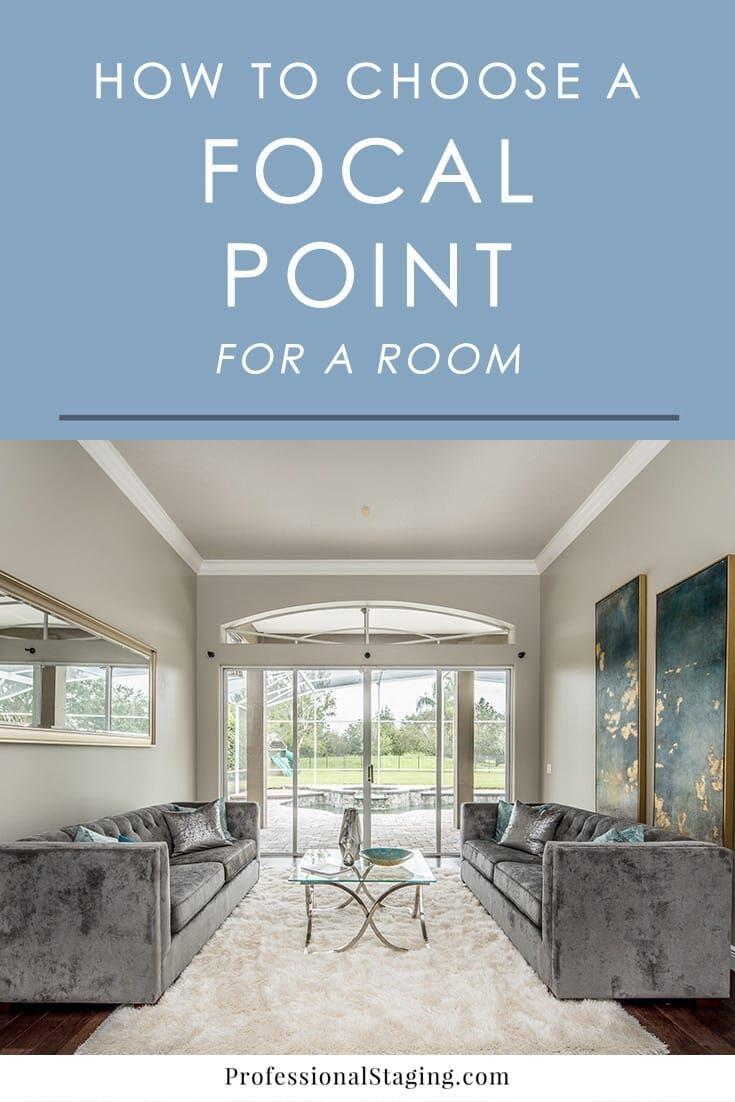
When designing your living room, it’s essential to have a focal point.
This could be an architectural feature like a lovely fireplace.
Alternatively, it could be a piece of furniture or even art.
However, sometimes we end up with multiple focal points that compete for attention.
| Furniture Piece | Action | Reason |
|---|---|---|
| Fireplace Mantle | Remove clutter, add symmetrical decorations. | To draw attention and balance the space. |
| Niche Buffet | Lower the TV above it, remove unnecessary items. | To make it less overwhelming and integrate into the space better. |
| Accent Chair | Place next to the buffet. | To connect the separate areas of the room together. |
| Couch and Chairs | Simplify arrangement or swap locations if possible. | To streamline design and focus on main features of the room. |
| Table 1: Suggestions for Adjusting Furniture Arrangements | ||
This table offers a simple yet effective approach to defining your living room’s central point.
Selecting and enhancing a single focal point helps in creating a unified design narrative.
Be open to rearranging furniture as this often resolves conundrums like competing focal points – something I found useful from a Houzz discussion.
Remember, less is often more when it comes to accessorising.
So, play around and experiment with your living room until you achieve the seamless, coordinated look you desire.
Defining Your Traffic Flow

The key to an efficient great room lies in defining your zones. Use distinct attributes like flooring, furniture, and color schemes to differentiate between areas.
This approach helps occupants and guests navigate the space without any confusion. It’s one of the keys to mastering room traffic flow.
Creating a Focal Point
In every room, creating a focal point is crucial. This could be a unique piece of furniture or striking artwork that draws attention.
A focal point also guides traffic flow within the room, acting as an anchor around which everything else revolves.
Minimizing Obstacles
When arranging furniture, it’s essential to avoid congesting main pathways. Remember to leave enough space for comfortable movement and efficient use of different areas.
Optimizing Furniture Placement
The way you position your furniture can influence traffic flow. For instance, positioning a sofa between the kitchen and family area can stimulate conversation and interaction.
It’s all about encouraging a natural flow from one zone to another with thoughtful furniture arrangement.
Using Barriers and Screens
You can also use screens, plants, or consoles strategically to demarcate different zones. This doesn’t hamper the spacious feel, yet provides a sense of order within the room.
Maintaining Visibility
Maintain an unobstructed view across the room for easy navigation. Clear lines of sight not only render aesthetic appeal but also boost functionality by facilitating movement.
Considering Traffic Patterns
Consider how people will move within the room. Place frequently used items within easy reach and avoid positioning traffic paths through areas of high usage.
Maximizing Corner Use
Make the most of corners by positioning smaller furniture pieces wisely or adding built-in units. This can considerably enhance the functionality of your room.
Incorporate Ample Storage
A clutter-free room is soothing to the senses. Incorporate ample storage solutions to keep the room organized, maintaining a clear and inviting visual flow.
Balancing Pathways
Ensure that pathways between different areas are balanced and symmetrical. This adds to aesthetic harmony and avoids any awkwardness in movement.
Adding Plants and Artwork
Enhance the ambiance and define different sections of the room with strategic use of plants and artwork. These elements add a touch of vibrancy and freshness to your space.
Utilizing Vertical Space
Vertical elements like shelving and cabinetry can help maximize storage and create a sense of openness. It also makes use of otherwise wasted space, providing additional utility.
Designing for Optimal Lighting
Lighting plays a crucial role in mood setting. Balance natural and artificial lighting sources to ensure your room remains bright and inviting throughout the day.
Optimize Layout for Entertainment
A great room should be an ideal space for socializing. Therefore, position furniture and seating areas strategically to accommodate various activities and gatherings.
Positioning Large Furniture First
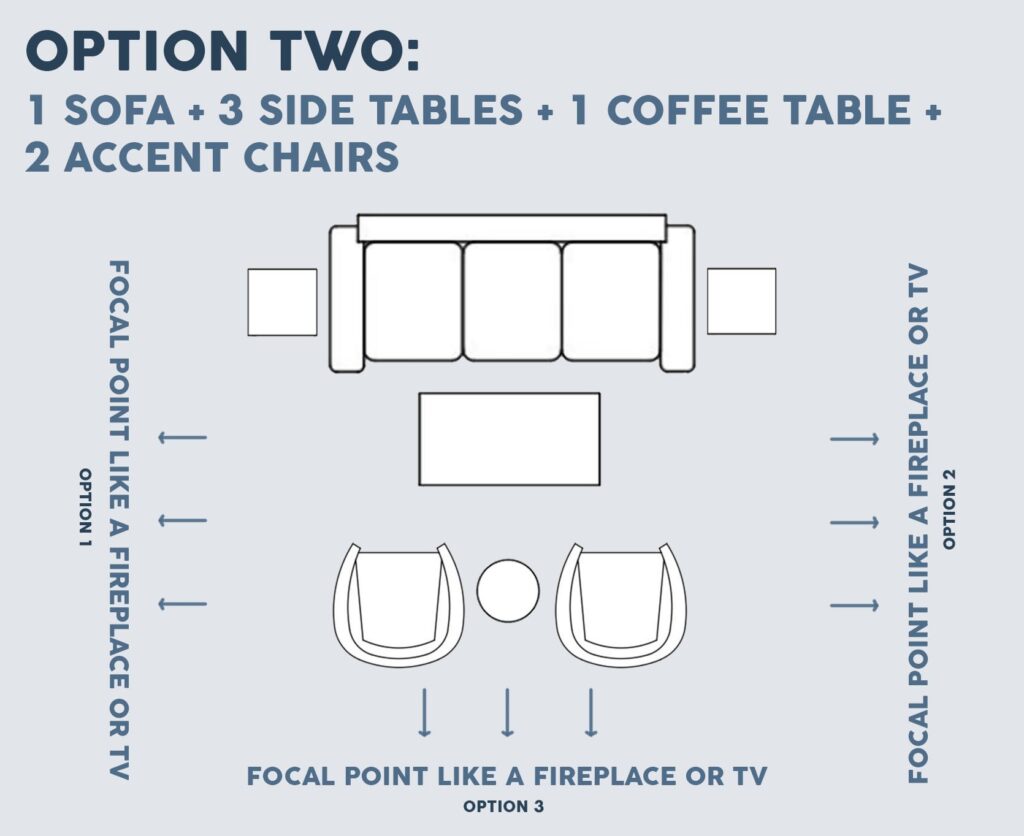
When arranging your living room, always start with the chunkier pieces. I suggest situating your most substantial piece of furniture first.
Your sofa, for instance, is a pivotal piece. Where you place it can dictate the layout of the entire room.
Consider the Room’s Focal Point
You need to identify the room’s focal point. Whether it’s a fireplace, large window, or a television set.
Plan your furniture placement around that central feature. Use it as a guide to where your larger items should go.
Maintain Balance in Placement
Balancing furniture placement significantly enhances your space’s visual appeal. It’s not just about symmetry; it’s also about maintaining an overall equilibrium.
To achieve this, counterbalance the weight of bulkier items with smaller pieces or opposite elements.
Avoid Obstructing Traffic Flow
Your furniture arrangement shouldn’t impede room traffic. You don’t want to trip over coffee tables or squeeze past chairs constantly.
There should be clear paths for movement. By doing so, you enable smoother navigation throughout the space.
Inspire beauty and functionality in your living room through proper furniture placement. With these steps, you’re on your way to creating a balanced, seamless interior design.
Determining TV and Fireplace Placement
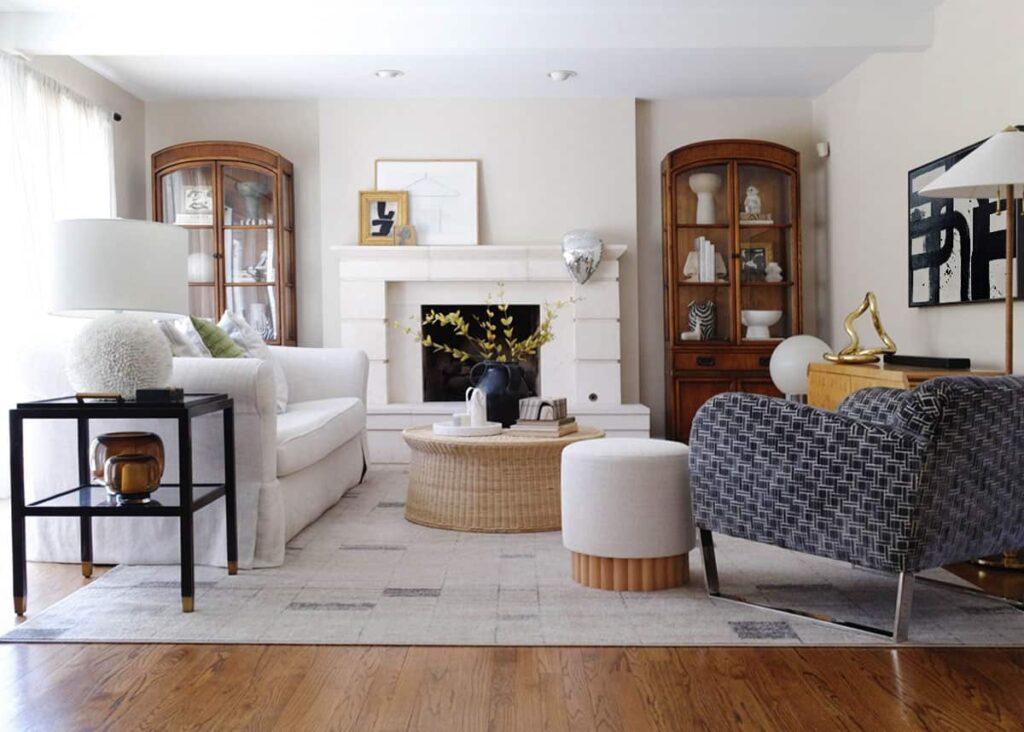
When arranging a small living room, use your wall space wisely. A TV stand or console with built-in storage could serve as a dedicated spot without overwhelming the space.
Ensure your TV is at eye level for comfortable viewing. This helps create balance in your room’s layout.
Optimize Nooks and Alcoves
If you have small alcoves or nooks, transform them into a TV viewing area. Incorporate floating shelves or built-in shelving for other media devices.
Avoid Large Window Glare
Avoid placing the TV opposite large windows to minimize glare. If unavoidable, use high-quality blinds or curtains to control the light.
Mount your TV above a fireplace or on a pull-out stand that can be concealed when not in use – this ensures optimal viewing distance and angle.
Choosing the Right TV Size
In small living rooms, a slim, compact TV can reduce visual bulk. Consider a TV size between 40 and 49 inches for such spaces.
The ideal viewing distance should be 1.5 to 2 times the size of your TV screen. This helps maintain comfortable viewing angles while maximizing the aesthetic appeal of your space.
Creating Straight Path Traffic Flows

Designing a living room isn’t merely about aesthetics. Above all, it should promote easy movement. Let’s consider some techniques to create smooth traffic flows.
- Centralize the coffee table: The coffee table often acts as a central hub, so placing it in the middle of the seating arrangement makes it accessible from every angle.
- Maintain open walkways: Don’t cramp your space with too much furniture. Moderation is key for maintaining open and unobstructed paths.
- Optimize corner spaces: Corners are typically under-utilized. Consider adding a corner shelf or stand to enhance functionality as suggested by HomeBNC.
- Avoid blocking entries/exits: Ensure no furniture obstructs doors or walkways. This promotes smooth movement throughout the room.
Traffic flow may seem trivial, but it’s crucial for enjoyable, stress-free living areas. Keep these tips in mind when arranging your furniture.
Consider how you and others move in the room. Are there any obstacles? If yes, think about rearranging your furniture for smoother traffic flows.
Finally, always remember that comfort takes precedence over visual appeal. A well-planned living room reflects a good understanding of space utilization and movement patterns.
Furniture Arrangements for Lounging
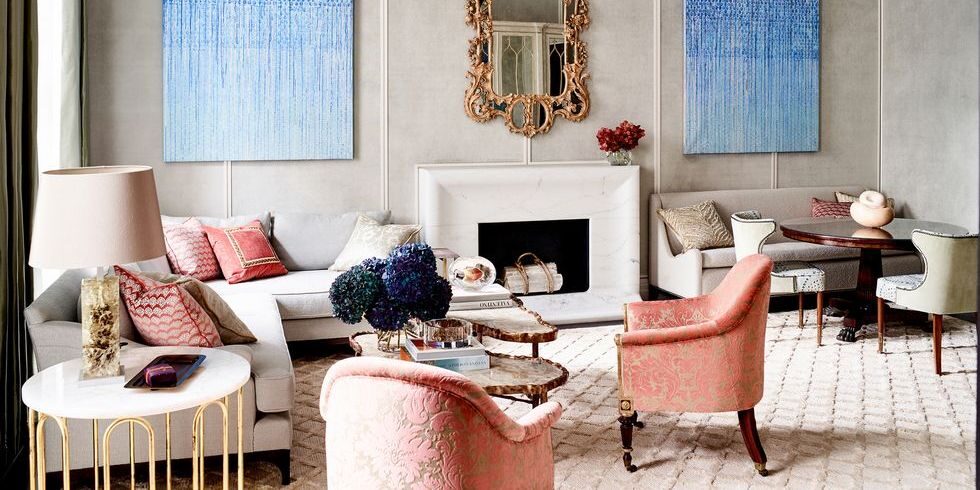
Whether you’re relaxing or entertaining, the right furniture arrangement can enhance your living room experience. Designers like Metro Design focus on product and interior layouts.
Nicolas Gagnon specializes in furniture design for lounging. His interior designs fuse style with comfort to create inviting spaces.
AP-Architecture’s lounge seating options deliver a touch of sophistication to any living room. They are not just stylish, but also ergonomically designed.
Shenyang Runyun Design contributes to home decor with their stunning range of living room furniture. Their pieces are practical and exquisitely crafted.
Kyla Langdon’s lounge sofas bring an air of elegance and comfort in equal measure. Her unique upholstery techniques add to the aesthetic appeal.
The lounge chairs by Atié Design make a statement of their own. These pieces are versatile and can accommodate different interior styles.
Furniture designs by Fabien Roy focus on industrial design principles to create functional yet appealing lounge pieces. Every piece exhibits meticulous attention to detail.
Dheera Design offers lounge furniture designs that combine functionality with decorative elements. Their pieces bridge the gap between tradition and modernity.
Rose Humble’s designs for sofas and armchairs carry a distinct simplicity. They provide comfort without sacrificing style, making for perfect lounge furniture.
Dodz Design, known for their ‘Laboratory of Design’, take an experimental approach to furniture design, showcasing unique product designs for the lounge area.
Living Room Layouts for Gathering Spaces
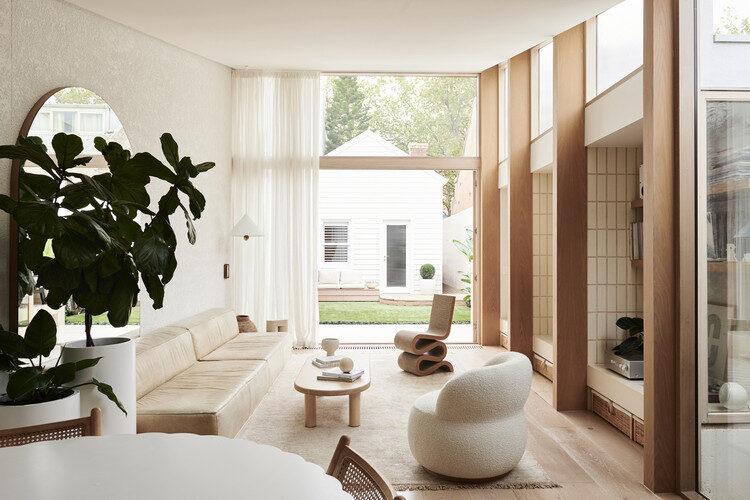
Creating a welcoming and functional living room layout is a crucial step in enhancing your home’s overall aesthetic. Drawing inspiration from designers can provide valuable insights.
Take a cue from Meghan Eisenberg, who transformed a Century-Old LA Craftsman into a hospitality paradise. The challenge lies in balancing modern requirements with the charm of historic roots.
- Embrace Authenticity: Retain original elements of the space to ensure its historic appeal isn’t lost.
- Suit to Personality: Reflect the lifestyle and preferences of the homeowners in the layout.
- Simplicity Is Key: Avoid clutter with thoughtfully selected pieces that have both function and form.
- Incorporate Comfort: Choose furniture that provides comfort for hours of socializing or relaxation.
Another exemplar designer, Elizabeth Young helped Drunk Elephant Founder Tiffany Masterson bring aesthetic appeal to her Lake Austin Escape. Young used a rich palette to evoke a sense of tranquility.
San Francisco designer Jon de la Cruz offers valuable lessons in integrating modern comforts and vintage style, as seen in the Dreamy Lake Tahoe cabin he styled. Cruz strikes a balance between patina and polish, ensuring functionality without sacrificing aesthetics.
An interesting take on layouts is Faith Blakeney’s transformation of an old surf shack in Todos Santos, Mexico, into an eclectic seaside treasure. Vibrant colours and fun elements make this gathering space an oasis of playfulness and joy.
No matter your design sensibility, these expert insights allow you to create living room layouts that offer both practical utility and stylistic panache.
10 Rules for Arranging Living Room Furniture
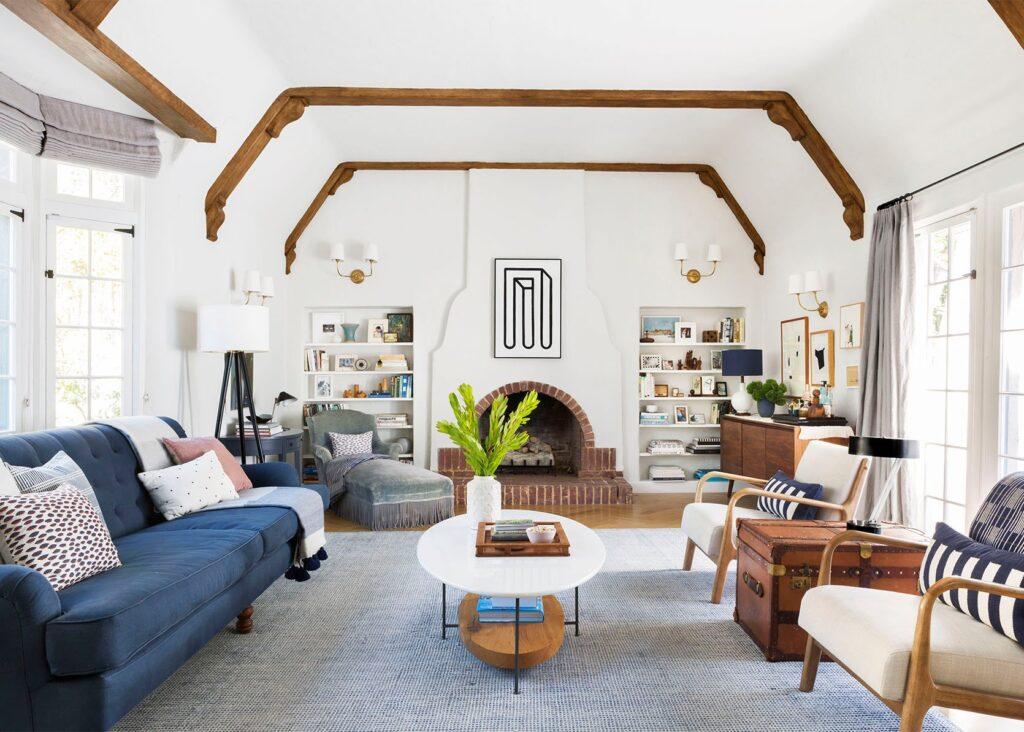
Understanding your living room’s purpose is fundamental before deciding on furniture arrangement. Will it serve as an entertainment space, a gathering area, or both?
Getting the dimensions of your room and creating a detailed floor plan will give you a clear visual. It’s a foolproof way to avoid unnecessary hassles.
Determining your focal point, be it a fireplace or artwork, is key. This draws attention and sets the tone for the rest of the room’s aesthetics.
Hosting guests? Arrange your furniture in a conversational triangle to foster interaction and engagement among everyone present.
Scaling your furniture accurately enhances proportion and brings harmony to your setup. This results in a neat, orderly feel that elevates comfortability.
Balance is essential. By juxtaposing large pieces with smaller ones, you ensure both weight distribution and visual appeal.
Your living room should also be accessible. Leaving sufficient space between furniture allows people to navigate through the room comfortably.
Mirrors can act as pseudo-windows. When positioned strategically, they reflect light, amplify space and improve the overall appearance of your room.
Negative space isn’t necessarily a bad thing. When utilized correctly, it can create visual interest and impart a more spacious feeling.
Last but not least, don’t shy away from experimenting. Feel free to rearrange the furniture until it suits your taste and preference perfectly.
Mastering Furniture Layout
Achieving an inviting living room arrangement with a fireplace and TV depends on balance, convenience, and aesthetics. Position the seating for comfortable viewing of both TV and fireplace. Create intimate zones while maintaining free paths. Consider the room’s architecture and your lifestyle preferences. Remember, the key is to create a cozy, functional, and well-integrated setting.


